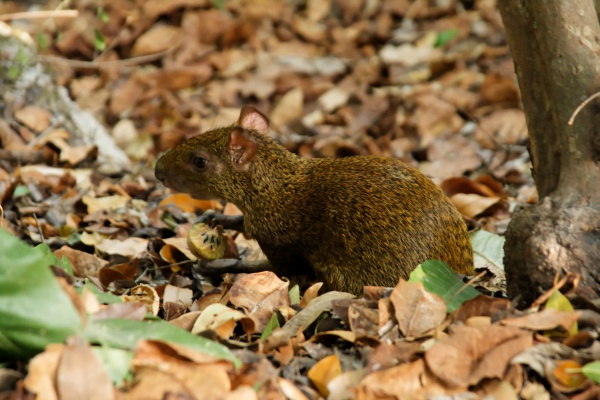Facts About Agouti
Agoutis, commonly known as common agoutis, are fascinating rodents belonging to the genus Dasyprocta. These intriguing creatures inhabit the forests and woodlands of Central America, northern and central South America, as well as the southern Lesser Antilles. Some species have also been introduced to the West Indies. Agoutis are related to guinea pigs but are significantly larger and possess longer legs. Their fur can vary in color from brown, reddish, and orange to greyish or blackish, typically featuring lighter bellies. When startled, their coarse hair stands erect. Agoutis weigh between 2.4 to 6 kg and measure 40.5 to 76 cm in length, with short, hairless tails.
Interestingly, in West Africa, "agouti" refers to the greater cane rat. In different regions of the Americas, they go by various names: "sereque" in Mexico, "ñeque" in Panama, and "guatusa" in eastern Ecuador. The name "agouti" itself derives from indigenous South American languages such as Guarani or Tupi. These rodents have distinctive characteristics, including five toes on their front feet and three on their hind feet, as well as cylindrical-crowned molar teeth. They can grow up to 60 cm in length and 4 kg in weight, with brown backs and whitish or buff-colored bellies.
Agoutis thrive in forested and wooded areas across Central and South America, including rainforests, savannas, and even cultivated fields. Although shy in the wild, they can become quite trusting in captivity. They are swift runners, moving with grace and agility. Their diet primarily consists of fallen fruit, leaves, roots, and occasionally the eggs of ground-nesting birds or shellfish. While they can sometimes cause damage to sugarcane and banana plantations, they play a crucial role in seed dispersal, benefiting their ecosystems.
Agoutis breed twice a year, giving birth to litters of two to four young in burrows lined with leaves, roots, and hair. They can live up to 20 years and often form lifelong bonds with their mates. There are several species of agoutis, including Azara's agouti, black agouti, Central American agouti, and Mexican agouti, each with its own unique traits and habitats.

 Peru
Peru